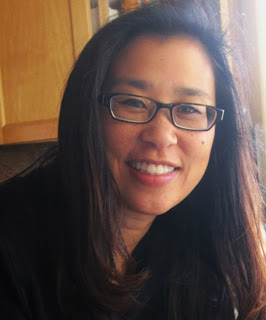How did you become an artist?
Like a lot of artists I was always drawing and painting as a kid but I really didn’t plan or expect to
be an artist “ when I grew up”. It wasn’t until an advisor in college pointed me towards all of the career possibilities for a creative person. After graduation I eventually landed a job with The Paper Company as a graphic Designer/Illustrator working my way up to lead Designer, Art Director and eventually Creative Director. I was able to develop the entire product line, design the catalogues and best of all I still illustrated a lot of the line which was the most fun. I took a similar position with a company in Colorado for a couple of years before finally launching my own company in 2002 as a licensing artist.
Did you go to art school?
I went to The University of Idaho, Boise State University, and The Art Institute of Seattle. The nice thing about attending a couple of different schools is that you meet a lot of interesting people and that experience helps inform the type of artists that you become.
Were there 1 or more individuals that were an influence in your becoming an artist?
For me there was never that one person who was hugely influential but there were several artists that have inspired and influenced me. Namely Bill Watterson, Charles Shultz, Art Chantry ( one of the great modern designers), Bill Cummings, John Singer Sargent, the artists of the Mexican Muralist Movement especially Jose Clemente Orozco, the 9 old men ( the original Disney Studio artists), Richard Diebenkorn.
What inspires you now?
Lots of things. The top of the list would have to be my daughters who are amazingly creative ( and yes I am happy to steal ideas from them). Nature and travel, books and music.
Is there anything you would like to share regarding your technique and style?
I work in several different styles and mediums but most of my work is in acrylic paint. I start with pencil sketches and then I paint usually working dark to light. once upon a time I did full single illustrations but now days I usually paint sections, the background and main elements and then I scan the paintings in, compose them digitally and color correct them for printing. The reason I work this way is so my art can easily be place on different product formats. After so many years of working as a creative director on the manufacturing side and going to press checks,working with color separators, printers and designers,as well as manipulating other peoples artwork that I had licensed I have developed very specific ways of working and building my files to make it easy for the
manufactures to produce their product and for it to sell well.
What types of markets do you create art for?
The majority of my work is for licensing and I am currently working in Paper Products (Greeting Cards, Gift Bags, Wrap etc.) Tabletop, Gourmet Food Packaging, textiles, Calenders, Garden, Gift ware Art Prints and Home Decor. I have made a bit of a conscience effort to move more into Home decor so I have been doing pillows, rugs, serving trays.I also do Graphic design, Logos, identity development, posters etc. Mostly on the side but it’s fun to do.
Are there links to where we can see more of your work?
The best place is my website at: www.scottchurchcreative.com
Are there other things you do regarding art like teaching?
I have taught Illustration and Typography at Metropolitan State College of Denver in the past but these days I just concentrate on my licensing work.
Are there other creative interests you pursue like music or writing?
I love both music and writing but I don’t really pursue either one. Really all of my free time is taken up with restoring my 110 year old Victorian House, which actually can require quite a bit of creativity and appears to be a never ending project.
Do you currently have product on the market with your images?
Yes, I pretty much always have something out there with my art on it. The nature of licensing combined with different production schedules for different companies means I often don’t know where exactly my product is but I do know that I have Greeting Cards, Gift Bags, Napkins, Paper Tabletop, Rugs, Pillows and Prints currently out in the marketplace.
What do you love most about what you do?
Wow, where do I start? I think first of all it is simply being creative for a living. It is an essential part of









































